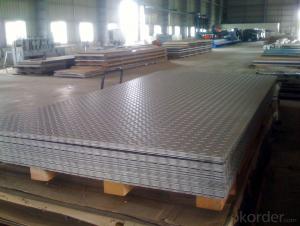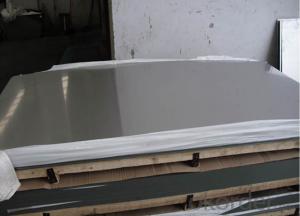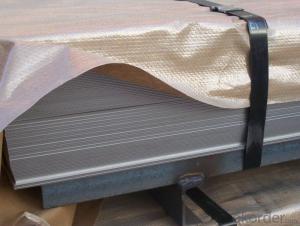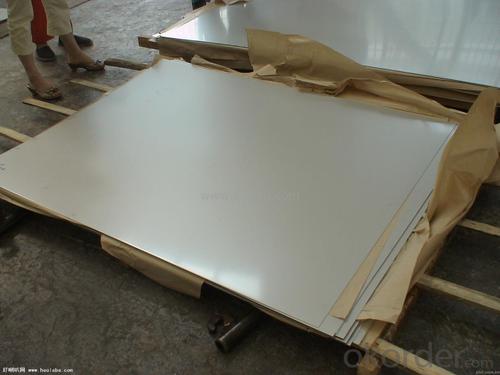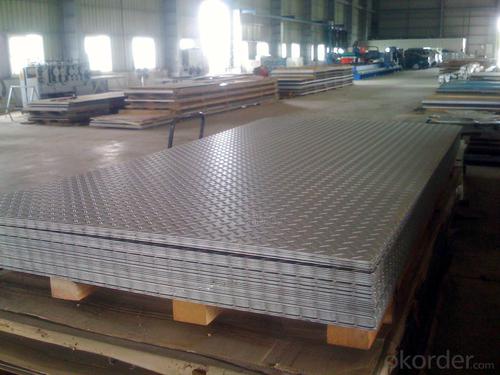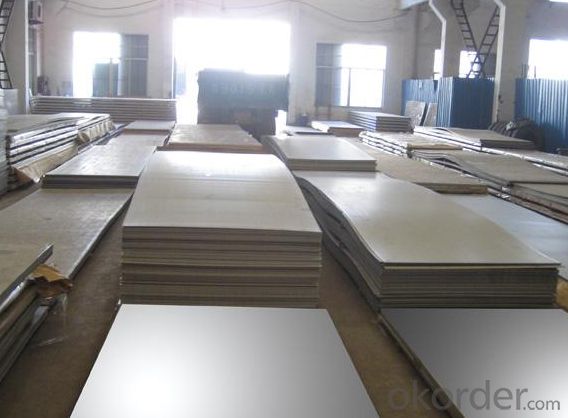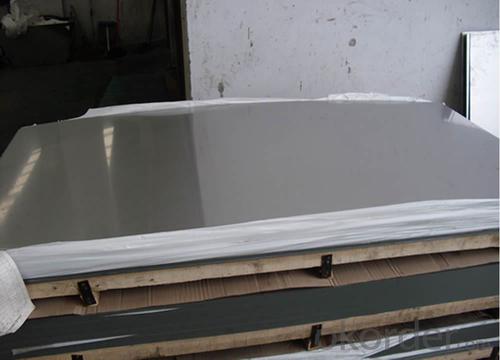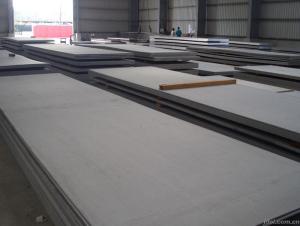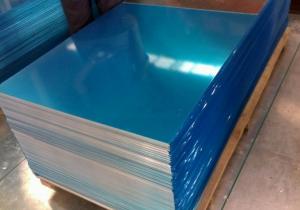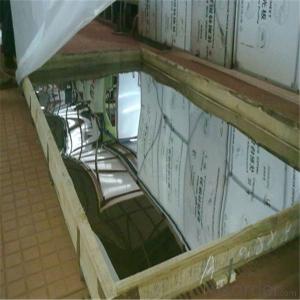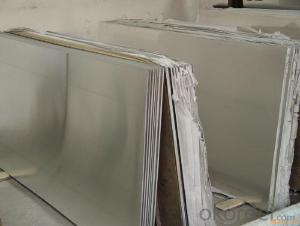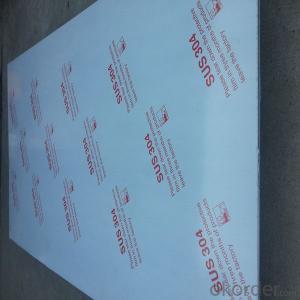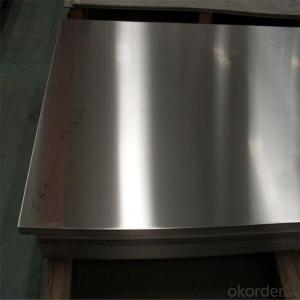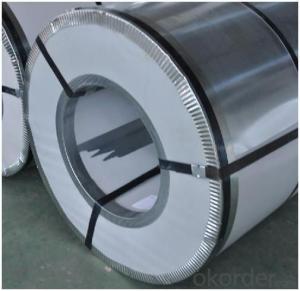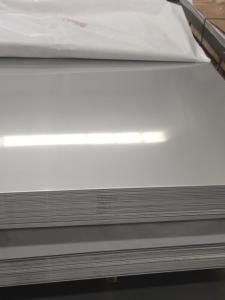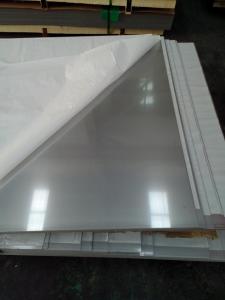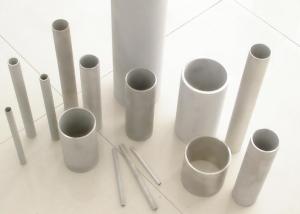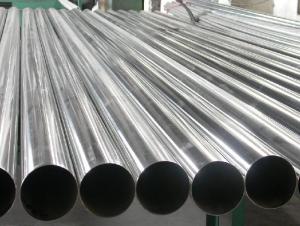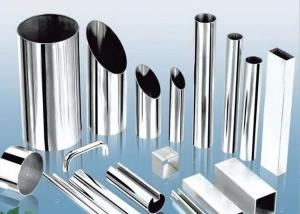Stainless Steel Sheet/Plate 310 with Better Temperature Resistance
- Loading Port:
- Shanghai
- Payment Terms:
- TT or LC
- Min Order Qty:
- 1000 m.t.
- Supply Capability:
- 8500000 m.t./month
OKorder Service Pledge
OKorder Financial Service
You Might Also Like
Stainless Steel Sheet/Plate 310 with Better Temperature Resistance
Description of Stainless Steel Sheet/Plate 310 with Better Temperature Resistance:
Stainless steel is a production which not easy rust,acid resistance and corrosion resistance,so it is widelyused in light industry,heavy industry,daily necessities and the decoration industry.my company long-termsupply stainless steel porducts including:stainless steel sheet,stainless steel coil and stainless steel tube.
Main Features of Stainless Steel Sheet/Plate 310 with Better Temperature Resistance:
•Escalator, Elevator, Doors
•Furniture
•Production tools, Kitchen appliances, freezers, cold rooms
•Auto Parts
•Machinery and Packaging
•Equipment and Medical devices
•Transport system
Application of Stainless Steel Sheet/Plate 310 with Better Temperature Resistance:
Stainless steel’s resistance to corrosion and staining, low maintenance and familiar lustre make it an ideal material for many application
s.There are over 150 grades of stainless steel, of which fifteen are most commonly used. The alloy is milled into coils, sheets, plates,
bars, wire, and tubing to be used in cookware, cutlery, household hardware, surgical instruments, major appliances, industrial equipme
nt Storage tanks and tankers used to transport orange juice and other food are often made of stainless steel, because of its corrosion re
sistance and antibacterial properties. This also influences its use in commercial kitchens and food processing plants, as it can be steam
cleaned and sterilized and does not need paint or other surface finishes..
Specifications of Stainless Steel Sheet/Plate 310 with Better Temperature Resistance:
Description | steel sheet,hot rolled steel sheet,cold rolled steel sheet, steel sheet,sheet,steel plate |
Standard | ASME, ASTM, EN ,BS,GB,DIN, JIS etc |
Application | Steel sheet applies to construction field, ships building industry, petroleum & chemical industries, war and electricity industries, food processing and medical industry, boiler heat exchanger, machinery and hardware fields. |
Packaging | Standard export sea-worthy packing |
Delivery time | 10-30 days |
Quality | No.1 |
Productivity | 500 tons/Day |
Note | Our company has cooperative relation between the domestic agents. Stainless steel sheet can be made accordingto the customers requirements. Fasten delivery. Quality assured. |
Contacts | If you have any question,please feel free contact me. |
Surface Finish Characteristics Stainless Steel Sheet/Plate 310 with Better Temperature Resistance:
| Surface finish | Characteristics and application |
| 2B | The surface brightness and flatness of no2B is better than no2D. then through a special surface treatment to improve its mechanical properties,No2B could nearly satisfy comprehensive uses. |
| No.1 | Polished with abrasive belt of grit#100-#200, have better brightness with discontinuous coarse stria, used as inner and external ornaments for building, electrical appliances and kitchen utensils etc. |
| No.4 | Polished with abrasive belt of grit #150-#180,have better brightness with discontinuous coarse stria, but thinner than No3, are used as bathtub buildings inner and external ornaments electrical appliances kitchen utensils and food processing equipment etc. |
| HL | Polished with abrasive belt of grit #150-#320 on the NO.4 finish and has continuous streaks, mainly used as buildings ornaments elevators, door of building, frontal plate etc. |
| BA | Cold rolled, bright annealed and skin-passed, the product have excellent brightness and good reflexivity like mirror, kitchen apparatus, ornament etc. |
| 8K | The product have excellent brightness and prefer reflexivity can to be the mirror. |
Images of Stainless Steel Sheet/Plate 310 with Better Temperature Resistance:
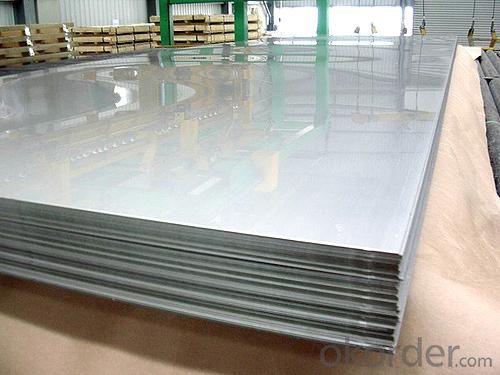
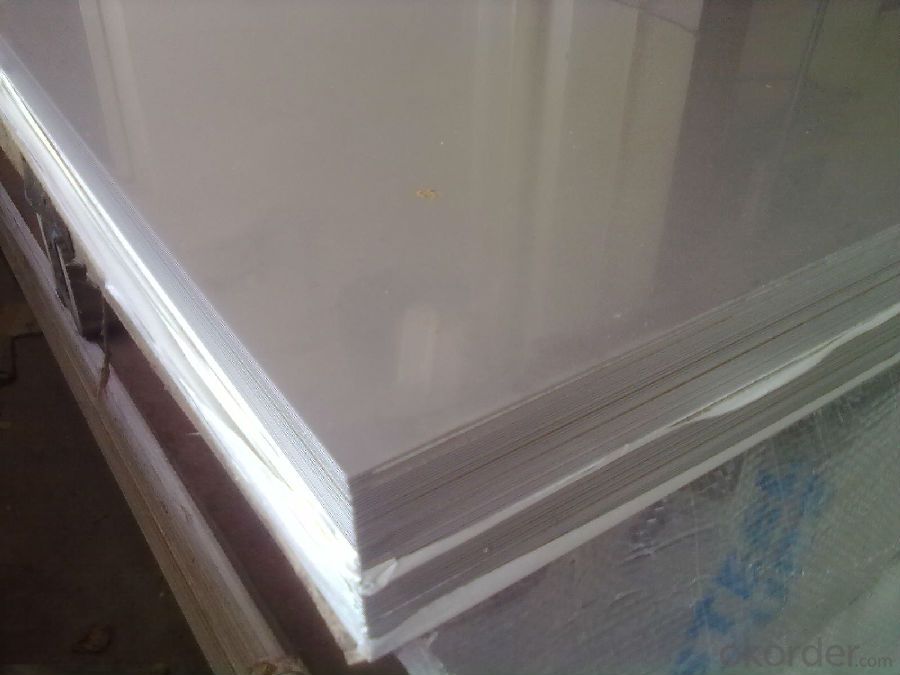
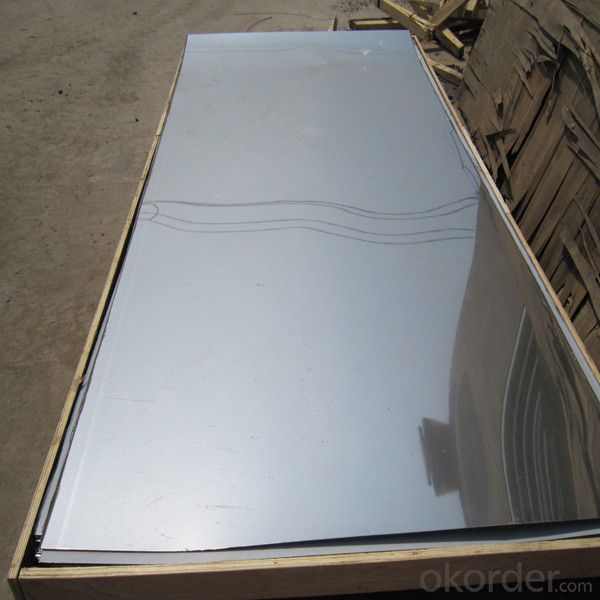
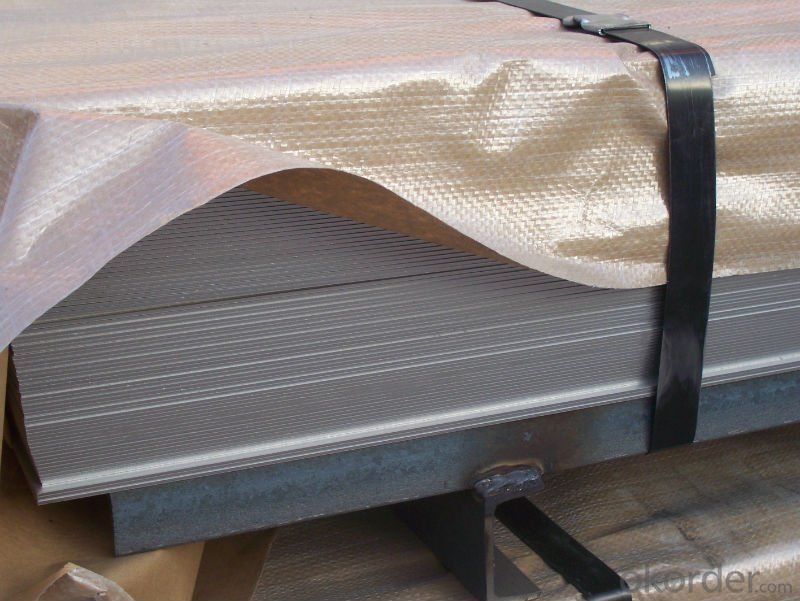
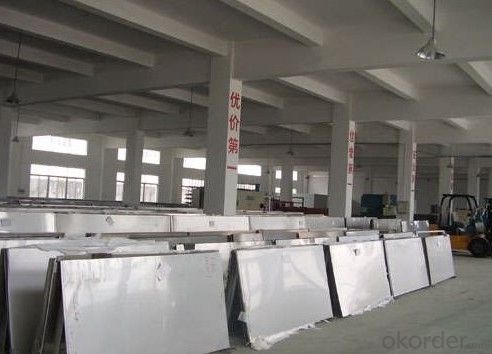
Sandard Seaworth Packing(wooden packing with water proof paper):

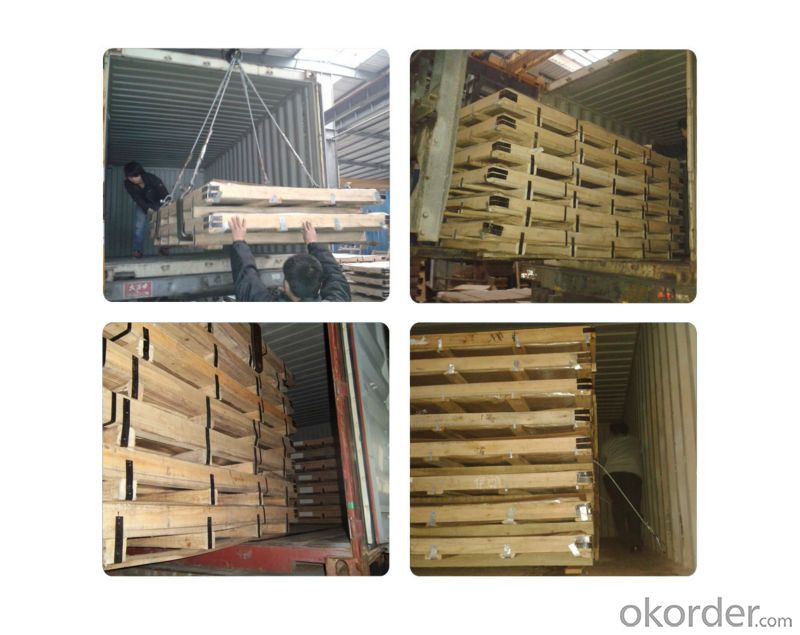
FAQ of Stainless Steel Sheet/Plate 310 with Better Temperature Resistance:
1. What are we supplying?
We are specialized in producing stainless steel coil, stainless steel (plate/sheet), and duplex stainless steel for a prelonged period. We are currently supplying grade of steel of 201/202,304/304L, 310S/309S/316L/316Ti/321, 410/420/430/443/444/409L, and 904L.
2. How Many years experience do we have?
We have been exported to more than 20 countries in the past 15 years.
3. How long do we usually reply your request?
We always reply our customer within 24 hours.
If you have any question about stainless steel sheets,donot forget to sending the email to Us! You will get the competitive Price and have a very good experience about the Buying Process! CNBM International Corporation is always your trustful friend!
- Q: How do you remove rust from stainless steel sheets?
- To remove rust from stainless steel sheets, there are a few effective methods you can try. Here are a few options: 1. Vinegar: Vinegar is an excellent natural cleaner that can remove rust from stainless steel. Soak a cloth or sponge in white vinegar and rub it onto the rusted areas. Let it sit for a few minutes, then scrub the rust away with a soft-bristle brush. Rinse the sheet with water and dry it thoroughly. 2. Lemon juice and baking soda: Create a paste by mixing lemon juice and baking soda together. Apply the paste to the rusted areas and let it sit for about 10-15 minutes. Scrub the rust away with a soft cloth or sponge, rinse the sheet, and dry it completely. 3. Commercial rust remover: If the rust is stubborn or extensive, you can use a commercial rust remover specifically designed for stainless steel. Follow the instructions on the product and wear protective gloves as some rust removers can be harsh. After applying the rust remover, rinse the sheet thoroughly and dry it well. 4. Sanding or wire brushing: For more severe rust, you can use sandpaper or a wire brush to remove the rust manually. Start with a coarser grit sandpaper or brush and gradually move to a finer grit until the rust is completely removed. Be sure to sand or brush in the direction of the grain to avoid scratching the stainless steel surface. Afterward, clean the sheet with a mild detergent, rinse, and dry thoroughly. Remember to always test any cleaning method or product on a small, inconspicuous area of the stainless steel sheet first to ensure it doesn't cause any damage. Additionally, regular maintenance and proper storage can help prevent future rust formation on stainless steel sheets.
- Q: Are stainless steel sheets resistant to chemicals and acids?
- Yes, stainless steel sheets are generally resistant to chemicals and acids due to the protective layer of chromium oxide that forms on their surface, which prevents corrosion and damage.
- Q: How do you prevent fingerprints or smudges on stainless steel sheets?
- To prevent fingerprints or smudges on stainless steel sheets, there are several effective measures you can take: 1. Clean with a microfiber cloth: Use a soft microfiber cloth to wipe down the stainless steel surface regularly. Microfiber is known for its ability to attract and trap dirt, dust, and oils without leaving streaks or smudges. 2. Use warm soapy water: Mix a small amount of mild dish soap with warm water and gently wipe the stainless steel surface with a soft cloth or sponge. Rinse thoroughly and dry with a clean towel. This method effectively removes grease, fingerprints, and smudges. 3. Invest in stainless steel cleaners: There are numerous stainless steel cleaning products available in the market. These cleaners are specifically formulated to remove fingerprints, smudges, and restore the shine of stainless steel surfaces. Follow the instructions on the product for best results. 4. Apply a protective coating: Consider using a stainless steel protective coating or sealant. These products create a thin, invisible barrier that helps repel fingerprints and smudges. Apply the coating according to the manufacturer's instructions and reapply as needed. 5. Avoid abrasive cleaners or tools: Abrasive cleaners, scrub brushes, steel wool, or harsh chemicals can damage the protective layer of stainless steel, making it more prone to fingerprints and smudges. Stick to non-abrasive cleaning methods and tools to maintain the integrity of the stainless steel surface. 6. Handle with care: When touching stainless steel sheets, try to handle them with clean hands or wear gloves to prevent the transfer of oils or dirt. Avoid dragging objects across the surface, as this can cause scratches and make it more susceptible to smudging. By incorporating these preventive measures into your cleaning routine and handling practices, you can effectively minimize fingerprints and smudges on your stainless steel sheets, keeping them looking clean and pristine.
- Q: What are the different sheet sizes available for stainless steel?
- Stainless steel sheets come in a variety of sizes to suit different applications and industry requirements. The most common sheet sizes for stainless steel are 4 feet by 8 feet (48 inches by 96 inches) and 4 feet by 10 feet (48 inches by 120 inches). These sizes are widely used in construction, manufacturing, and fabrication industries. However, stainless steel sheets are also available in other sizes depending on the specific needs of the project. Some suppliers offer custom cutting services, allowing customers to order sheets in non-standard dimensions. This flexibility in size options ensures that stainless steel sheets can be tailored to fit various applications, from small-scale projects to large industrial installations. Moreover, the thickness of stainless steel sheets can vary significantly. Standard thicknesses range from 0.4 millimeters to 12 millimeters, but thicker or thinner sheets can be manufactured upon request. Different thicknesses are selected based on the strength and durability required for a particular application. Ultimately, the availability of different sheet sizes for stainless steel ensures that customers have the flexibility to choose the most suitable dimensions for their specific project needs.
- Q: What are the benefits of using mirror-finish stainless steel sheets?
- There are several benefits to using mirror-finish stainless steel sheets in various applications. Firstly, the mirror-like surface of these sheets adds a touch of elegance and style to any space. Whether it is used in interior design, architecture, or decorative pieces, the reflective nature of the mirror finish enhances the overall aesthetic appeal. Additionally, mirror-finish stainless steel sheets offer exceptional durability and longevity. The high-quality stainless steel material used in their production ensures resistance to corrosion, rust, and staining, making them suitable for both indoor and outdoor use. This quality also makes them easy to clean and maintain, saving time and effort in upkeep. Another advantage of mirror-finish stainless steel sheets is their ability to reflect light. This characteristic makes them an excellent choice for spaces that require enhanced lighting or for applications where light distribution is essential. The reflective surface helps to brighten up the environment, making it ideal for areas such as kitchens, bathrooms, and commercial spaces. Moreover, mirror-finish stainless steel sheets are highly versatile and can be used in a wide range of applications. From countertops and backsplashes in kitchens to wall claddings, elevator interiors, and even custom-made furniture, their versatility allows for creative and unique designs in various industries. Furthermore, mirror-finish stainless steel sheets have excellent heat resistance properties, making them suitable for applications that involve high temperatures. This feature makes them a popular choice in commercial kitchens, industrial settings, and other environments where heat exposure is a concern. Lastly, mirror-finish stainless steel sheets are an environmentally friendly option. Stainless steel is highly recyclable, and using mirror-finish sheets promotes sustainability by reducing the need for new materials. This aspect aligns with the growing emphasis on eco-friendly practices and the desire to reduce the carbon footprint. In conclusion, the benefits of using mirror-finish stainless steel sheets include their elegant appearance, durability, light reflection capabilities, versatility, heat resistance, and eco-friendliness. These qualities make them a desirable choice for various applications, providing both aesthetic appeal and functional advantages.
- Q: Are stainless steel sheets suitable for elevator flooring?
- Indeed, elevator flooring can be made of stainless steel sheets. The reason behind this preference is that stainless steel possesses durability and resistance against corrosion, rendering it an ideal selection for spaces with heavy foot traffic, such as elevator floors. It can endure substantial weights and is impervious to scratches, stains, and dents, guaranteeing a flooring solution that is both visually appealing and long-lasting. Furthermore, stainless steel is effortless to clean and maintain, thereby providing a hygienic alternative for elevator flooring.
- Q: What is called anti fingerprint stainless steel sheet?
- Is the surface sealing oil slightly. After sealing the oil, the surface is covered with a thin layer of ink, and the fingerprints are not easy to stick on. So also called anti fingerprint stainless steel.
- Q: How are stainless steel sheets finished?
- Stainless steel sheets are finished through various processes such as grinding, polishing, and buffing, which result in different surface textures and appearances.
- Q: Are stainless steel sheets resistant to alkaline solutions?
- Yes, stainless steel sheets are generally resistant to alkaline solutions.
- Q: What's the cheapest kind of stainless steel plate? What's the model and how much is it?
- Austenitic stainless steel (non-magnetic) inside the 201 material is the cheapest, the average price of 9000 yuan / ton, including tax, accounting for 7.93 of the proportion of formula: thickness * width * length * weight = weight * unit price = per price
Send your message to us
Stainless Steel Sheet/Plate 310 with Better Temperature Resistance
- Loading Port:
- Shanghai
- Payment Terms:
- TT or LC
- Min Order Qty:
- 1000 m.t.
- Supply Capability:
- 8500000 m.t./month
OKorder Service Pledge
OKorder Financial Service
Similar products
Hot products
Hot Searches
Related keywords

